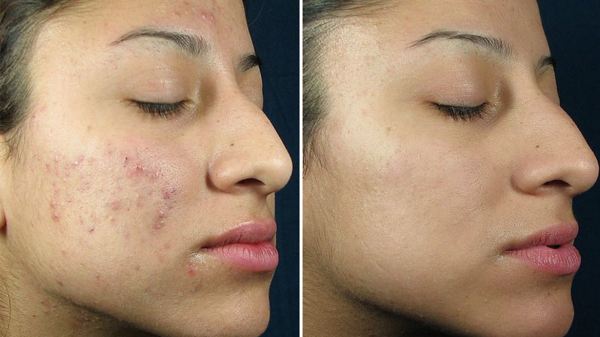It is essential to take care of our skin. Multiple factors play a crucial role in how it looks. We need to take care of it inside out. For that, having an extensive skincare regime has become crucial. Sometimes we need a little bit of a push. Something that is a little bit extra and can help us achieve our goals faster. One treatment that has increasingly become popular in recent times is chemical peels. With time, chemical peels have become safer. When choosing a chemical peel to undergo various aspects need to be kept in mind, like the concerns to be targeted and the chemical peel cost. We are here to tell you about the different chemical peel options and concerns targeted by them.
Glycolic Acid
A chemical peel should be considered when looking to clear whiteheads and lighten post-inflammatory hyperpigmentation caused by previous breakouts. Derived from sugar cane, this acid has a small molecular structure which allows easy penetration from the top layers. It causes exfoliation and can clear pores that have hardened oils, cell debris and trapped bacteria. To achieve noticeable results, it is recommended to have a gap of 2 to 3 weeks between the peels.
Salicylic Acid
Salicylic Acid is a beta-hydroxy acid which comes from the willow tree. It has anti-inflammatory properties which can easily target concerns like red, inflamed pimples and papules. This chemical peel is also an excellent option for dehydrated, sensitive skin, ingrown hairs and seborrheic dermatitis. If allergic to aspirin, you should avoid this chemical peel.
Kojic Acid
A by-product of the fermentation of sake, this chemical peel can help achieve intense skin-lightening results. It does so by inhibiting the overproduction of melanin. To decrease the occurrence of free radical production. Vitamin C is often combined with this chemical peel. This targets skin damage caused by environmental factors.
Mandelic Acid
Despite being an AHA with a larger molecular structure, this chemical peel can effectively target the appearance of fine lines. It is said to reduce the melasma by 50% in around 4 weeks. When combined with Kojic and Salicylic acid peels, it can easily treat acne vulgaris and hyperpigmentation.
Retinoic Acid
Tretinoin is an active form of Vitamin A that can renew ageing skin cells. It works by stimulating collagen and elastin production in the deeper layers. As there is a constant cell turnover, it leads to the normalization of the keratin cells. This, in turn, leads to a decrease in atypical cells. As a result, the skin is brighter, younger-looking and more resilient. Retinoic Acid peels last for around 4 months.
Lactic Acid
An AHA derived from the diary, this chemical peel is an excellent choice for sensitive skin. Using Lactic acid in low concentration for a long time can cause strong exfoliation. It can easily target freckles and superficial acne scars. It also resolves Keratosis Pilaris, which is usually at the back of the arms.

